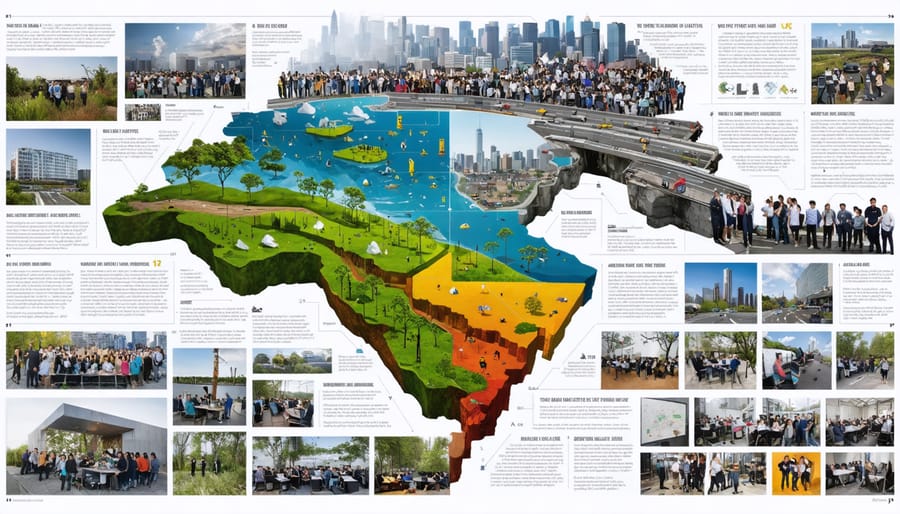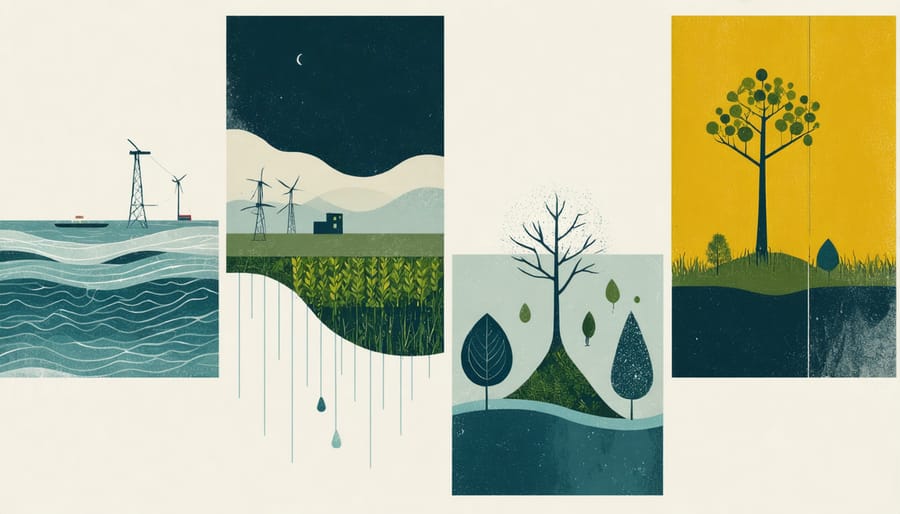The U.S. Climate Resilience Toolkit: Your Guide to Adapting to Climate Change

Use the U.S. Climate Resilience Toolkit to climate control your community. Explore the Steps to Resilience framework to assess risks, investigate options, prioritize actions, and take steps to safeguard your area. Access topic-specific tools covering coastal flood risk, ecosystem vulnerability, heat health, and more. Engage with the expertise and data of NOAA and agencies across the federal government to make climate-smart choices.
Understanding Climate Risks with the Toolkit

Climate Explorer
The Climate Explorer is an interactive tool that allows you to visualize and explore local climate projections. With just a few clicks, you can see how temperature, precipitation, and other variables are projected to change in your area over the coming decades. The tool uses the latest climate model data and offers a range of scenarios based on different greenhouse gas emissions pathways.
To get started, simply enter your location or zoom in on the map. You can then select the climate variable, time period, and emissions scenario you’re interested in. The Climate Explorer will generate easy-to-read graphs and maps showing the projected changes for your area. You can compare different time periods and scenarios side-by-side to see how the impacts may vary.
Whether you’re a homeowner wanting to understand how climate change may affect your property, or a community leader planning for the future, the Climate Explorer provides valuable insights. You can use the tool to explore potential impacts on everything from energy demand to water availability to ecosystem health. Armed with this knowledge, you can make more informed decisions and take steps to build resilience in your home and community.
Steps to Resilience
The U.S. Climate Resilience Toolkit outlines five key steps to help assess and address climate risks. First, identify the problem by determining your exposure to hazards like extreme heat, drought, or flooding. Next, assess your risks and vulnerabilities, considering factors such as infrastructure, populations, and assets that could be impacted. With a clear understanding of your risks, investigate options like vinyl storage sheds to protect valuables or green infrastructure to manage stormwater. Prioritize solutions based on effectiveness, feasibility, and cost. Then, take action by breaking your plan into concrete steps, securing funding, and engaging stakeholders. Finally, evaluate your progress regularly, making adjustments as needed. By following this framework, you can proactively build resilience to climate change impacts in your home or community.
Taking Action: Toolkit Resources for Resilience

Topic Areas
The U.S. Climate Resilience Toolkit covers a wide range of crucial topics to help individuals and communities understand and prepare for the impacts of climate change. One key focus area is coastal flood risk, which provides information and tools to assess vulnerability and develop strategies to mitigate potential damage from rising sea levels and storm surges. The Toolkit also delves into food resilience, offering insights on how climate change affects agriculture and food systems, along with resources to enhance food security and sustainability.
Another important subject is human health, exploring the various ways climate change can impact our well-being, from heat-related illnesses to the spread of vector-borne diseases. The Toolkit provides guidance on protecting public health and adapting to these challenges. Additionally, the Toolkit addresses ecosystem vulnerability, highlighting the effects of climate change on natural habitats and biodiversity. It offers tools to assess ecosystem risks and develop conservation and restoration strategies to build resilience.
By exploring these diverse topics, the U.S. Climate Resilience Toolkit equips users with the knowledge and resources needed to understand and address the multifaceted impacts of climate change on our communities and environment.
Case Studies
The U.S. Climate Resilience Toolkit features numerous case studies showcasing how communities across the country are taking action to enhance their climate resilience. From coastal cities implementing sea level rise adaptation strategies to rural towns developing drought preparedness plans, these real-world examples offer valuable insights and inspiration. One standout case is the City of Miami Beach, Florida, which has invested in elevating roads, installing pumps, and creating eco-friendly shed solutions to combat frequent flooding due to rising seas. Another example is the Swinomish Indian Tribal Community in Washington State, which has developed a comprehensive climate adaptation plan that incorporates traditional ecological knowledge and modern science to protect their coastal lands and resources. By exploring these case studies, communities can learn from the successes, challenges, and innovative approaches of others as they work to build their own climate resilience.
Tools
The U.S. Climate Resilience Toolkit offers a suite of interactive tools to help users assess risks, plan projects, and make informed decisions. The Climate Explorer allows you to visualize climate projections and observe historical trends in your area. With the Coastal Flood Exposure Mapper, you can evaluate potential impacts from sea level rise, storm surge, and coastal flooding. The Climate Resilience Evaluation and Awareness Tool (CREAT) enables utilities to assess vulnerabilities and develop adaptation plans. The Ecosystem-Based Management Tools Network provides a database of tools for natural resource management in a changing climate. Whether you’re a homeowner, community planner, or natural resource manager, these tools empower you to understand local risks and take action. The Toolkit’s tools are designed to be user-friendly and accessible, with clear instructions and engaging visualizations. Explore the tools section to find the right resources for your climate resilience needs.
Getting Involved and Finding Support
Training Courses
The U.S. Climate Resilience Toolkit offers a variety of online and in-person training courses designed to build skills and knowledge in climate resilience. These courses cover topics such as understanding climate data, assessing local climate risks, and developing adaptation strategies. The online courses are self-paced and accessible from anywhere, making it easy for individuals and communities to learn at their own convenience. The Toolkit also provides in-person training workshops, often in collaboration with local partners, to delve deeper into specific topics and facilitate hands-on learning. These workshops bring together experts and practitioners to share best practices and discuss real-world applications. Whether you’re a homeowner looking to protect your property from climate impacts or a community leader seeking to build resilience, the Toolkit’s training offerings provide valuable resources to enhance your skills and take action.

Federal Support
The U.S. Climate Resilience Toolkit offers various ways to connect with government agencies and programs for technical and financial assistance. Users can explore the “Find Experts” page to identify local, state, and federal agencies that provide support for climate resilience projects. The Toolkit also highlights grant programs, such as NOAA’s Coastal Resilience Grants and FEMA’s Building Resilient Infrastructure and Communities (BRIC) program, which offer funding opportunities for communities. Additionally, the “Training Courses” section lists online and in-person workshops hosted by government agencies to help users build skills in climate adaptation planning and implementation. For example, a homeowner looking to fortify your shed door against storm damage could find relevant guidance and potential funding sources through these resources. By leveraging the Toolkit’s connections to federal support, individuals and communities can access valuable expertise and resources to enhance their climate resilience efforts.
The U.S. Climate Resilience Toolkit serves as a vital resource for individuals and communities seeking to understand and adapt to the impacts of climate change. By providing a wealth of information, tools, and support, the Toolkit empowers us to take meaningful action towards building resilience in the face of a changing climate.
As individuals, we have a significant role to play in fostering climate resilience. The Toolkit offers practical guidance on how to assess our vulnerabilities, reduce our carbon footprint, and prepare for potential climate-related risks. From making informed decisions about our homes and businesses to advocating for climate-friendly policies, every action we take contributes to a more resilient future.
However, the true power of the U.S. Climate Resilience Toolkit lies in its ability to facilitate collective action. By bringing together stakeholders from various sectors—including government agencies, businesses, nonprofits, and community organizations—the Toolkit promotes collaboration and knowledge-sharing. Through coordinated efforts, we can develop and implement comprehensive strategies that address the unique challenges faced by our communities.
The impacts of climate change are already being felt across the nation, from rising sea levels and more frequent extreme weather events to shifting ecosystems and public health concerns. By leveraging the resources and support provided by the U.S. Climate Resilience Toolkit, we can proactively address these challenges and build a more sustainable and resilient future for ourselves and generations to come.
In conclusion, the U.S. Climate Resilience Toolkit serves as a catalyst for individual and collective action towards climate resilience. By equipping us with the knowledge, tools, and support we need, the Toolkit empowers us to make informed decisions, collaborate effectively, and take meaningful steps towards a more resilient future. As we face the mounting challenges posed by climate change, it is crucial that we embrace the resources and guidance offered by the U.S. Climate Resilience Toolkit and work together to build a more sustainable and resilient world.

